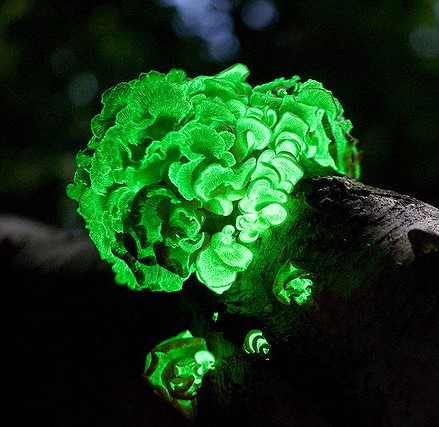To celebrate 350 years of scientific publishing, we are inviting our readers to tell us about their favourite papers from the Royal Society archive.

Bioluminescence – light emitted by living organisms – has fascinated observers for millennia. Aristotle described glowworms and fireflies, and was also aware that fish, in particular, are capable of emitting an eerie glow of light as their flesh decays. It wasn’t until Robert Boyle (a founding Fellow of the Royal Society) observed the light emitted from rotting wood and fish, that any scientific investigations into this remarkable phenomenon were undertaken. His observations were first reported in The Philosophical Transactions in 1666. It was here that Boyle showed that air was essential for light to be observed. In a later paper in 1672, Boyle describes how he was able to read that month’s issue of the Transactions using the light from a Neck of Veal; a feat probably not repeated since.
What Boyle was observing was the light emitted by either bioluminescent fungi (from the rotten wood) or bioluminescent bacteria (from the fish or meat). We now know that the biochemical reactions involved require a number of reactants including oxygen, a small molecule to emit the light, and an enzyme as a catalyst. These enzymes are generically called “luciferase” enzymes, and it was one of these enzymes, from the firefly Photinus pyralis, that brought me to read Boyle’s papers. In the early 1980s I had been working, with my colleague Bill Lieb, on the inhibition of this enzyme by general anaesthetics. Stimulated by earlier work on bioluminescent bacteria, whose light output had been shown to be sensitive to low concentrations of anaesthetics, we set about purifying the enzyme from thousands of tails of fireflies to test the idea that the inhibition was due to the anaesthetics directly binding to the enzyme. The dominant idea at that time was that general anaesthetics acted on the lipid portions of membranes, and the idea that they might bind directly to proteins was thought to be highly improbably because anaesthetics are so diverse in their structures. Once we had obtained highly pure crystals of the enzyme, we were able to show a remarkable correlation between anaesthetic potencies in animals and the concentrations needed to inhibit the bioluminescence. Because the inhibition was due to the anaesthetics simply binding to the enzyme and displacing the small molecule that emitted the light, these results were easily generalisable, and we argued that similar binding pockets on key proteins in the brain must exist and that this would explain general anaesthesia.
It was while we were writing this work up for publication, we came across Boyle’s papers in Philosophical Transactions. It taught us what we should have known already – there is nothing new under the sun. Boyle had, in fact, got there first and described the first inhibition of bioluminescence by an anaesthetic, in his case, ethanol. Boyle wrote: “The same experiment I tried more than once with high rectified spirit of wine, which did immediately destroy all the light or the wood that was immersed in it; ….. nor did it in a pretty while regain its luminousness; (Which whether it recover’d at all, I know not; for this trial being made upon my bed, I fell asleep, before I had waited long enough to finish the observation.)”
